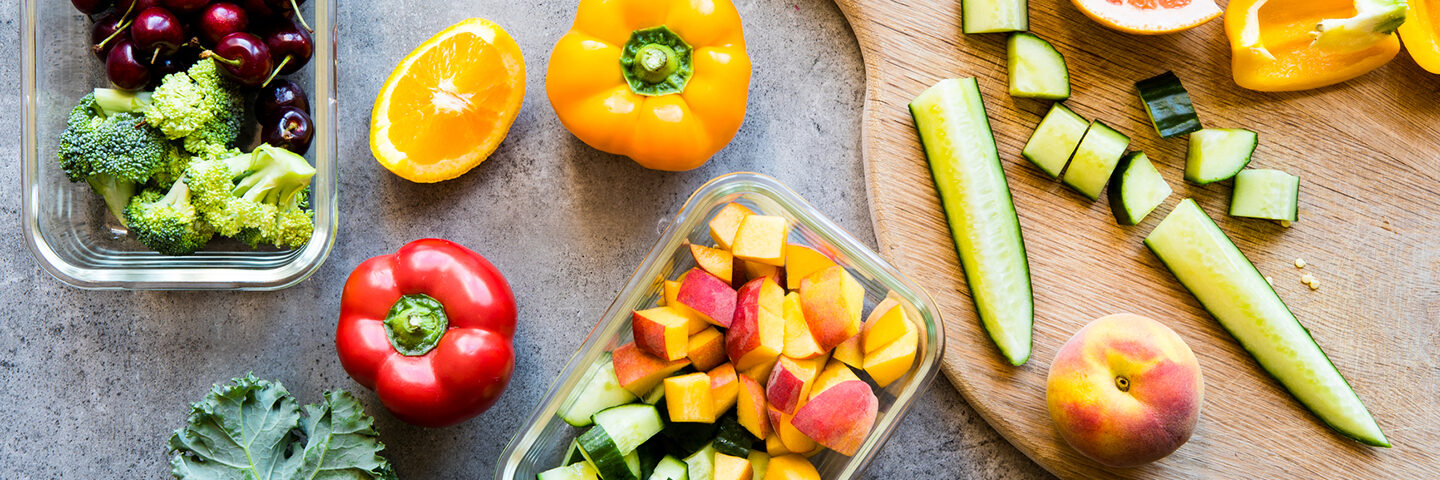
Is It Possible To Love Fruits & Veggies The Same? Diving Into Differences Between Fruits & Vegetables
I have three kids. If you asked me, I would tell you I love them all the same. Still, they are each unique and different from each other. They need different things from me, and, as a result, my interactions with each of them are often different from one another based on those needs. This is also true when it comes to consumers’ interactions and experiences with fruits and vegetables.
“Eat your fruits and vegetables” we often hear, with both of these powerful plant foods grouped together. Yet consumers’ ideas and challenges related to consuming fruits and vegetables are VERY different from each other. The unique health benefits of fruits and vegetables are well-documented, yet consumers’ distinct perspectives and behaviors related to each are becoming better understood – which is critical as we identify realistic, inspiring solutions to reverse Americans’ continued decline in consumption.
To help us learn more, the Produce for Better Health Foundation (PBH) conducted extensive consumer research over the past few years to help discover unique solutions that could effectively motivate people to meet daily recommendations for fruits and vegetables. The results were eye-opening: While people generally know fruits and vegetables are healthy and they’re trying to eat more, consumers have strongly different ideas about how and why to eat fruits and vegetables – and the people who eat the most of each are very unique as well. Here’s what we found:
- People are motivated to eat vegetables by a desire to “be healthier.” And, importantly, while these consumers define “healthier” in various ways – to get fit, lose weight, stick to a diet – they believe in a common goal to achieve success: eat more veggies! On the flip side, people are motivated to eat fruits because of the flavorful and enjoyable experience they associate with them. Fruits help them feel happy and joyful!
- People who eat vegetables less frequently say their biggest barriers are that they don’t know how to make vegetables taste good and preparation is time-consuming. Taste and time rule when people make food choices, so this obstacle is key to overcome. However, when these veggie “tasks” are completed, consumers feel a sense of accomplishment and pride—key emotions, that if reinforced, could lead to repeat consumption opportunities.
- While people are more likely to say eating fruit is fun, they’re concerned fruit contains too much sugar, and they tend to mostly eat fruit at breakfast, as a snack, and sometimes as part of a dessert. Unfortunately – but not surprisingly – most people don’t know the difference between fruits’ natural and added sugars – and worrying about sugar may overshadow the many positive nutrients in fruit as well as the overall eating experience.
- There’s a broad spectrum of vegetable eaters – from those who eat very few, to those who mask veggies in other foods and people who add spices to improve flavor – to people who regularly eat the recommended daily servings. Unfortunately, those who eat the fewest vegetables each day believe they have to eat a lot – and in the “purest” form (e.g., steamed, raw), to be successful.
- Among people who eat fruit most regularly, they not only eat fruit “as is”, but they also add fruit to other foods or meals: topping it into cereal or oatmeal; tossing it in a salad; chopping and adding it to familiar family favorites like tacos. And, frequent fruit eaters tend to “crave” fruit, while infrequent eaters crave indulgent foods more often. (Hint: Let’s make fruits and vegetables both crave-worthy!!)
Research also tells us people who eat fruits and vegetables most frequently are more likely to feel happy, energized and satiated – making it even more essential that we help Americans close the gap on consumption. Understanding – and appreciating – these fruit and veggies nuances as part of PBH’s KNOW-FEEL-DO Behavioral Framework is critical for us all to effectively meet Americans where they are and improve consumption. Since people think about eating fruits and vegetables differently, with unique feelings of enjoyment and satisfaction, we must ensure our marketing, messaging and resources are relevant to each – and to each type of consumer. Consider:
- Offering recipes, meal hacks and other inspirations that EASILY add flavor and save time with veggie prep: we have to break the belief that vegetables have little flavor and aren’t convenient. We must also reinforce the sense of pride and accomplishment that we FEEL when veggies are prepped, served, eaten and hopefully, also enjoyed.
- Leaning into how consumers associate fruit with happiness and celebrating fruit as the happiest solution to sweet cravings. FEEL the joy.
While these research insights have helped PBH create messaging and ideas that are uniquely relevant to fruits and vegetables, our consumer research also continues to tell us that people crave a simple call-to-action – something easy to get them started or to help them continue on their journey, connecting to them on a practical and emotional level. That’s where the Have A Plant® Movement comes in. The common thread for fruits and vegetables is that they are both the original plant food, and the Have A Plant® Movement celebrates this and calls on people to simply have a plan to Have A Plant® more often. We aim to make the DOing easy, fun and rewarding!
We can all agree there are many benefits associated with eating more fruits and vegetables – from the sweet-tasting, healthy eating experience of fruits to the smart satisfaction and pride associated with preparing vegetables. September 1 kicks off National Fruits & Veggies Month and there’s never been a better time for us to come together and motivate Americans to Have A Plant®!
Join the fun and help us spread the Have A Plant® love this September with our amazing plant-passionate tools! #haveaplant #NFVM2022
Also seen in The Produce News, Industry Viewpoint


